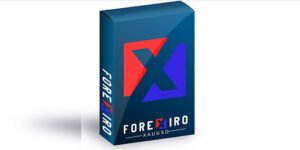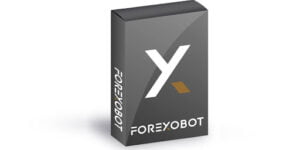Welcome to the exciting world of altcoin mining pools! If you’ve ever dreamt of contributing to the blockchain revolution and reaping some cryptocurrency rewards, then creating your mining pool might be the perfect adventure. This comprehensive guide will equip you with the knowledge and steps needed to build a thriving altcoin mining pool, fostering a collaborative community and securing your share of the crypto pie.
Why Build Your Pool?
While established mining pools offer a convenient entry point, venturing into your own pool creation unlocks several benefits:
- Community Building: Foster a passionate group of miners who share your vision for the altcoin you choose.
- Customization: Tailor the pool’s fees, payout structures, and minimum payout thresholds to suit your goals.
- **Transparency: ** Maintain complete control over the pool’s operations, ensuring fair distribution of rewards among miners.
- Learning Experience: Deepen your understanding of blockchain technology by getting hands-on with the inner workings of a mining pool.
Before We Begin: A Reality Check
Building a successful mining pool requires technical expertise, dedication, and a touch of entrepreneurial spirit. Here are some factors to consider:
- Technical Skills: You’ll need a solid understanding of blockchain technology, Linux systems, and server administration.
- Financial Investment: Setting up and maintaining a server can incur costs. Additionally, attracting miners might require initial incentives.
- Competition: The mining landscape is competitive. Carefully choose your altcoin and develop a strategy to stand out.
Gearing Up: Tools and Technologies
To embark on your pool-building journey, you’ll need the following:
- A Powerful Server: Choose a server with ample processing power and reliable internet connectivity to handle mining tasks and miner communication.
- Altcoin Choice: Select a promising altcoin with a viable mining algorithm. Consider factors like coin supply, project roadmap, and community sentiment.
- Full Node Software: Download and install the official full node software for your chosen altcoin. This allows your server to participate in the blockchain network.
- Mining Software Configuration: Configure popular mining software like CGMiner or EasyMiner to work with your altcoin’s hashing algorithm and connect to your mining pool.
- Stratum Server Software: Stratum is a communication protocol that facilitates efficient communication between miners and the pool. Popular options include XStratum or stratum-server.
- Web Development Skills (Optional): While not essential, creating a user-friendly web interface for your pool significantly enhances user experience. This allows miners to monitor hashrate, earnings, and pool statistics.
Building Your Dream Pool: Step-by-Step Guide
- Define Your Altcoin: Research and choose an altcoin with a suitable mining algorithm (e.g., SHA-256, Scrypt) that aligns with your technical expertise and hardware capabilities.
- Set Up a Full Node: Download and install the official full node software for your chosen altcoin. This software downloads the entire blockchain for your altcoin, allowing you to validate blocks and participate in the mining process.
- Configure Mining Software: Popular mining software like CGMiner or EasyMiner need configuration to work with your chosen altcoin. Specify the pool address (your server’s IP address), port number, and your miner username (optional).
- Create a Stratum Server: Stratum is the backbone of efficient miner communication. You’ll need to set up a Stratum server on your server using software like XStratum or stratum-server. This software manages communication with miners, distributes mining tasks, and collects results.
- Design a User-Friendly Interface (Optional): While not mandatory, creating a web interface significantly enhances user experience. This allows miners to easily register, monitor their hashrate and earnings, and view pool statistics. Basic HTML, CSS, and potentially server-side scripting knowledge (e.g., PHP) can be helpful for this step.
- Testing and Deployment: Once everything is configured, thoroughly test your mining pool in a closed environment before exposing it to the public. Simulate mining activity and ensure all components function as intended.
- Spreading the Word: Market your mining pool to attract miners. Cryptocurrency forums, social media communities, and relevant websites are great places to promote your pool.
Maintaining Your Pool for Success
- Regular Updates: Keep your server software, mining software, and Stratum server software updated with the latest security patches and bug fixes.
- Monitoring Performance: Continuously monitor your pool’s performance, hashrate, and network stability to ensure smooth operation.
- Transparency and Communication: Maintain open communication with your miners. Regularly update them on pool performance, upcoming upgrades, and any relevant news.
- Security is Paramount: Implement robust security measures to protect your server from cyberattacks. Use strong passwords, enable two-factor authentication, and keep your software up to date.
- Adapting to Change: The cryptocurrency landscape is constantly evolving. Be prepared to adapt your pool’s features and fees based on miner feedback and industry trends.
Building a Strong Community
Your mining pool is more than just software and servers; it’s a community. Here’s how to foster a thriving pool environment:
- Create a Welcoming Atmosphere: Establish clear communication channels like a forum or Discord server for miners to interact and share knowledge.
- Reward Loyalty: Consider implementing loyalty programs or referral bonuses to incentivize miners to stay active and attract new members.
- Fairness and Transparency: Ensure a fair and transparent system for distributing rewards among miners. Clearly outline your fee structure and payout mechanisms.
- Active Engagement: Regularly interact with your miners, address their concerns, and actively seek feedback to improve your pool.
The Future of Your Pool
As your pool grows, you might consider expanding your horizons:
- Multi-Coin Support: Explore adding support for additional altcoins with similar mining algorithms to attract a broader miner base.
- Advanced Features: Implement features like block explorer integration, advanced payout options, or a mobile app to enhance user experience.
- Partnerships and Collaborations: Partner with other mining pools or cryptocurrency projects for mutual growth and access to a wider network.
Also read Navigating the Altcoin Galaxy: Top contenders for 2024 and Beyond.
Conclusion: Building Your Legacy
Building a successful altcoin mining pool takes dedication, technical expertise, and a passion for cryptocurrency. By following these steps, fostering a strong community, and continuously adapting, you can transform your dream pool into a thriving hub within the exciting world of altcoin mining. Remember, the journey itself is a valuable learning experience, equipping you with in-depth knowledge of blockchain technology and the inner workings of cryptocurrency mining. So, dive in, start building, and conquer the crypto world together with your loyal mining community!







Be First to Comment